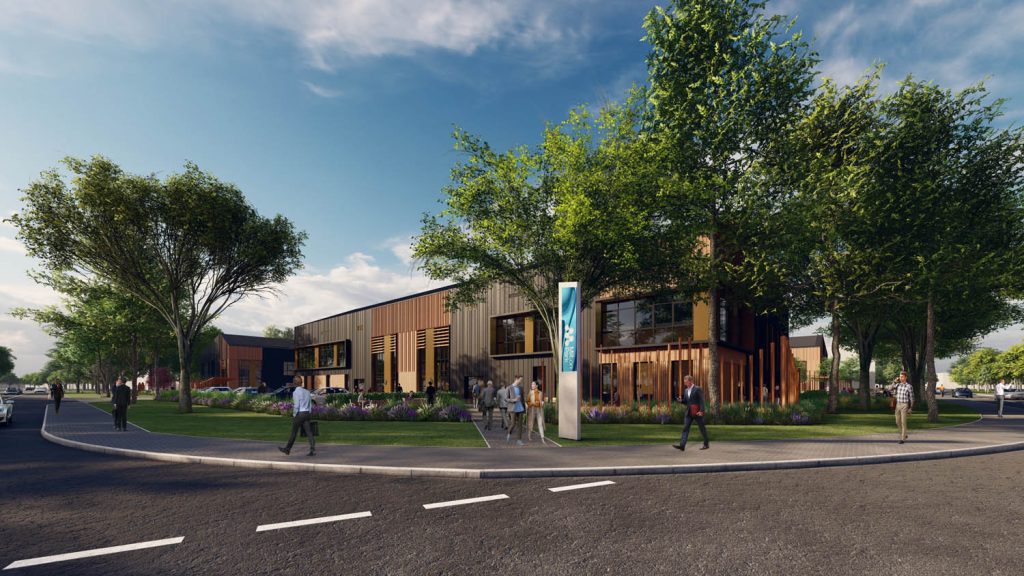Lee Jones, head of manufacturing solutions at NBS and acting head of sustainability at Byggfakta Group, on why we must ‘look to digital’ if we’re serious about sustainability
Climate change still remains humanity’s biggest challenge and with construction respon sible for 40% of GreenhouseGas (GHG) emissions , it has a major role to play in creating a cleaner, greener future. Yet despite the ongoing focus on sustainability and net-zero goal setting, new research has indicated that green achievements may have actually gone backwards in the past decade. NBS’ Sustainable Futures Report found that just one in three construction professionals are hitting low carbon targets on their projects, whereas ten years ago it was around half.
Whilst it’s likely that understanding around sustainability has improved since 2014, impacting this result, it’s still disappointing, particularly against a backdrop of evolving legislation such as the Future Homes Standard, planned for 2025, which will look to improve the energy efficiency of buildings through changes to Part L and F of building regulations.
Breaking barriers
That isn’t to say there’s a lack of willing on behalf of construction professionals – NBS found that sustainability was important to 97% of respondents – yet despite the climate emergency, barriers are still at play. A lack of client demand and the perception of a higher financial burden were presented as the main obstacles to sustainability. Further government policy and direction was another; respondents felt the Government wasn’t giving clear enough guidelines on the matter. The research also showed concern that greener products are more likely to be value engineered out or substituted due to material availability, at the contracting stage, preventing progress.
Solving the issue
So, how do we move the industry forward and improve levels of sustainability? Digital construction professionals hold the keys to solving a large part of the UK’s climate problems. Importantly, it’s in the design stages where the biggest impact can be made.
According to the Treasury and Green Construction Board, embodied carbon has the most potential to be reduced at the design and planning phases, more so than at any other point. However, if specifiers are to do this successfully, then it will require access to much more robust levels of product information data.
The past few years have shown how important this information has become – and its role is only going to increase. For specifiers, having access to detailed and accurate data allows them to make vital comparisons, so they can opt for the lowest carbon materials possible. Using this type of data in the design phase also makes calculations around embodied carbon become much more streamlined, giving a more accurate estimation of a project’s carbon footprint. Importantly, this data can then be used as a benchmark and reference point when looking to improve levels of sustainability in future projects. In short, it’s opening the door for better decision making.
These points highlight the need for manufacturer data sets – entering them as early into the design stages as possible will be vital to producing lower carbon buildings. We must remember that the building structure is responsible for the majority of embodied carbon, and getting that right at the start will be key to reducing it overall. The rest of the project though still remains crucial however, particularly when considering operational carbon. Structural elements for the foreseeable future will still remain carbon intensive until greener alternatives become mainstream, however when targeting carbon reduction at any point in time and across any area of the specification, it all begins with detailed data sets.
Summary
Data also plays another role – it helps move the needle in the sector’s goal towards achieving the Golden Thread. With a digital blueprint in place, it creates a traceable record of all the materials and products that were used during its specification. Whilst the Golden Thread has been developed with safety in mind, it also means greater transparency around the carbon footprint of building. Working with datasets in this way also delivers a more holistic overview of how products and systems interact, as this too can impact sustainability performance.
It’s clear that the sector requires a mind shift in how it perceives sustainability – it needs to be seen as a hygiene factor and no longer a ‘nice to have’ or inconvenient financial burden. As digital specification evolves and specifiers ramp up sustainability efforts, it will become increasingly important for manufacturers to provide the right levels of data and in a format that works for specifiers. Those that are already doing this are securing their future and creating USPs over competitors. Over time, this will only serve to improve their chances of making it into final specifications, ensuring they stay relevant in the years to come.
Top five tips for lower carbon outcomes
For those looking to increase levels of sustainability, these top-five tips should help specifiers on their journey to achieving lower carbon outcomes.
1. Make it number one – Prioritise sustainability from the off and consider it as early in the design stages as possible.
2. Consider embodied carbon – It’s important to consider embodied carbon stats with your designs and digital models as well as product performance data.
3. Working together – Both the model and specification need to be aligned so that the final build is as accurate to the original designs as possible.
4. Prescriptive not descriptive – Creating clear specifications that remove the likelihood of deviation will increase the chances of a sustainable outcomes being achieved.
5. Plan ahead – Contacting your supply chains at the earliest possible point will help you avoid issues with material availability and will give you time to source alternatives if problems arise.
Main image caption: ‘Nebula’ R&D scheme at Milton Park, a business, science and technology community in Oxfordshire, will use sustainably sourced materials throughout, including laminated timber beams in place of steel, reducing embodied carbon significantly.






